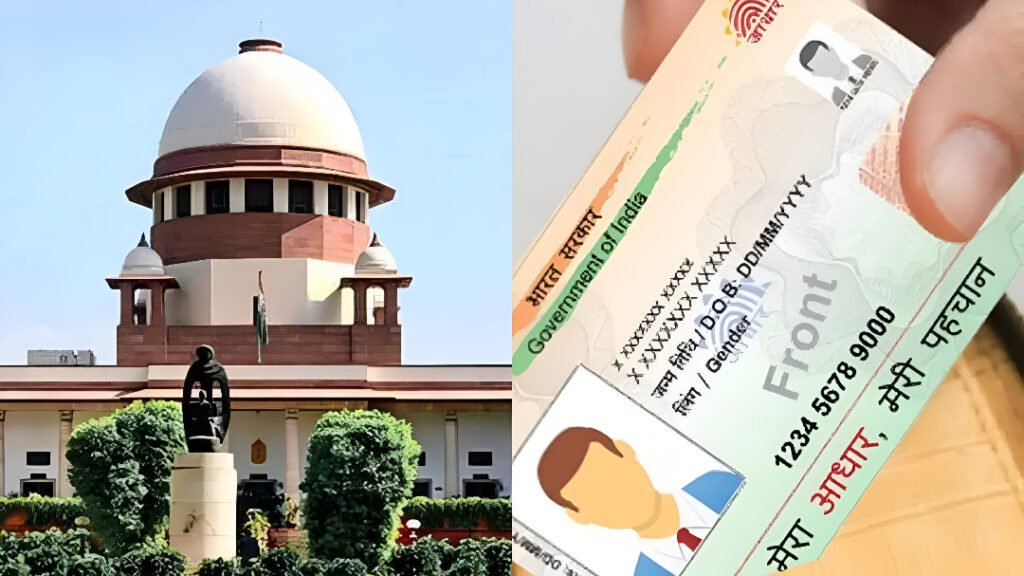The Supreme Court on August 22, 2025, told the Election Commission of India (ECI) that Aadhaar may be accepted as one of the documents people can use to challenge exclusion from the electoral rolls during Bihar’s Special Intensive Revision (SIR). As reported by NDTV, the bench directed the ECI to add Aadhaar to a list of 11 acceptable documents and set procedural deadlines for claim filing.

What the court actually said
The bench—which included Justice Surya Kant and Justice Joymalya Bagchi—told the ECI to permit voters who found their names deleted to submit re-inclusion claims using Aadhaar or any one of the 11 statutory documents already recognized by the electoral law. The court also urged political parties to mobilize booth-level agents to help affected voters file claims and ordered that the filing window be kept open online until September 1.
Why this matters—the numbers and the gap
The revision process in Bihar has been contentious: media and petitioners put the number of people excluded from the draft roll at very large figures. The ECI published lists and district data showing many names were removed for reasons ranging from duplication to deaths or migration; the court, after adjusting for duplicates and deaths, estimated roughly 35 lakh electors affected and noted the larger political and administrative fallout. Other reports continue to reference the broader count of voters originally highlighted (around 65 lakh) in public debate. The discrepancy underscores why an accessible, fast re-inclusion route is urgent.
Why this reporting is reliable
Experience (practical context): The order directly responds to the lived experience of voters who found themselves struck off the roll during a fast-tracked revision. The court explicitly asked parties and BLAs (booth-level agents) why they had not supported citizens on the ground, signalling the bench’s appreciation of how administrative and political practices shape democratic participation.
Expertise (legal and procedural clarity): The ruling is narrow and procedural—it does not equate Aadhaar with citizenship documents but endorses its use as proof for residence/identification in the revision exercise. That follows a pragmatic judicial approach: when large numbers risk disenfranchisement, courts can require administrative flexibility while preserving legal safeguards. For background on the ECI’s prior stance (that Aadhaar is not a standalone proof of citizenship), see the poll panel’s detailed affidavit and earlier filings.

Authoritativeness (bench and timeline): Because the Supreme Court issued the direction—with named judges and an express deadline (Sept 1) for claim submission—this is an authoritative judicial instruction that the ECI must operationalize promptly. The court further insisted on online filing options and acknowledgment receipts to prevent administrative non-compliance.
Trustworthiness (transparency & verification): The judgment foregrounds verifiable actions: adding Aadhaar to the document list, publishing deleted names, accepting online claims, and issuing acknowledgments. These are measurable, audit-friendly steps that make it possible for civil society and the media to track whether disenfranchised electors regain access to voting.
Implications—what this means for voters and the ECI
- Practical relief: Voters whose names were struck off now have a clearer, faster route to register for re-inclusion using Aadhaar—and can do it online till the court’s deadline. This should reduce last-minute exclusion on polling day.
- Administrative workstream: The ECI must update forms, permit online uploads, provide acknowledgment receipts, and publish compliance reports that show how many claims were accepted.
- Political accountability: The court’s rebuke of parties’ inaction invites political mobilization—parties are now expected to use their booth-level networks to assist voters, which could alter campaign-period ground operations.
What to watch next
- Whether the ECI publishes clear SOPs for Aadhaar-based claims and whether district offices turn around claims promptly.
- Real-time figures: how many re-inclusion claims are filed and accepted before Sept 1; whether digital barriers or lack of awareness prevent claimants from using the online window.
Bottom line
The Supreme Court’s direction to accept Aadhaar for voter-roll re-inclusion is a narrow, practical fix aimed at minimizing disenfranchisement during an intense roll revision. Its success will depend on swift ECI implementation, active political-party engagement at the booth level, and clear public communication so eligible electors can quickly reclaim their voting rights.











